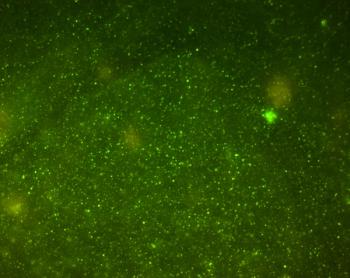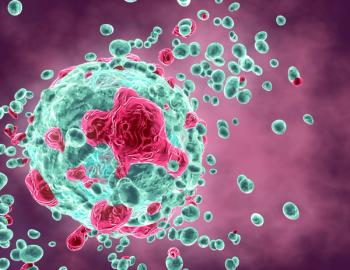
Scientists have developed a fluorescent sensor via a surface ion imprinting rice husk-based polymer capable of selectively detecting and efficiently adsorbing copper ions from lake water.

Scientists have developed a fluorescent sensor via a surface ion imprinting rice husk-based polymer capable of selectively detecting and efficiently adsorbing copper ions from lake water.

Researchers have conducted a study on natural stilbene-based sunscreens, uncovering the ultrafast non-adiabatic dynamics and UV protection mechanisms of hydroxy resveratrol and pterostilbene.

A recent study delves into the size-dependent optoelectronics of the N-type ultra-high conductive polymer PBFDO. Researchers explore the absorption spectra, charge transfer modes, and electron transport properties of PBFDO, providing valuable theoretical guidance for its potential applications in nanoscale optoelectronics and device design.

Researchers have conducted a preliminary study on the potential use of near-infrared (NIR) and Raman spectroscopy for predicting ice cream mix viscosity. The study highlights the promising performance of NIR spectroscopy and serves as a starting point for further investigations into in situ application of these analytical tools in the ice cream manufacturing process.

Researchers have developed a novel method, IEC-LIBS, which combines laser-induced breakdown spectroscopy and an ion enrichment chip for sensitive and rapid detection of chromium in different valence states in water and soil. The study demonstrates the effectiveness of this simple and environmentally friendly approach, offering potential for field applications and compliance with environmental quality standards.

Scientists have developed an optimized method for the precise measurement of iodine-129 in decommissioning wastes using tandem ICP-MS/MS. Their study demonstrates the effectiveness of this approach in achieving low-level measurements with improved sensitivity for waste characterization and environmental monitoring.

A team of researchers has developed a novel algorithm for rapid peak fitting and resolution enhancement in Raman hyperspectra analysis. The algorithm offers significant advancements in processing large datasets, improving peak resolution, and extracting valuable information about analytes.

A recent study presents an innovative approach for predicting sugarbeet seed germination using the fusion of hyperspectral imaging and information analysis techniques.

A new study demonstrates the improved accuracy of depth profiling in confocal Raman microscopy for analyzing the structural and chemical composition of polymeric microsphere layers.

Researchers have developed a near-infrared fluorescent probe that allows for highly sensitive detection of butyrylcholinesterase activity and pesticide residue in food samples. The probe offers a ratiometric pattern and shows promise for applications in health evaluation, disease diagnosis, and environmental monitoring.

A research team has utilized the Allan variance technique to analyze the performance characteristics of compact Fourier transform infrared (FT-IR) spectrometers. The study provides insights into the noise sources and instabilities of these handheld instruments, offering guidance for improving their accuracy and stability in real-time material detection and quantification applications.

Revolutionary research demonstrates the power of machine learning in predicting the ground-state electronic structure of organic molecules from core-loss spectra, offering new insights into nanomaterial design.

A new study leverages Fourier transform infrared spectroscopy (FT-IR) to determine the geographical origin and assess the quality of Rosa roxburghii Tratt (RRT), providing valuable insights for functional food production.

New research uncovers novel findings regarding rare earth element (REE) isotopes through the utilization of high-resolution laser-induced breakdown spectroscopy (LIBS) and laser-induced breakdown spectroscopy-molecular laser-induced fluorescence (LIBS-MLIF) techniques.

Machine learning and synchrotron radiation-based micro X-ray fluorescence imaging show promise for early cancer diagnostics by identifying trace biometals as potential cancer biomarkers. The research demonstrates the feasibility of using machine learning algorithms to analyze the spatial distribution of biometals and classify cancer pathogenesis stages, offering potential advancements in non-invasive cancer detection.

New research has demonstrated a two-stage machine learning strategy to overcome bias in spICP-TOF-MS data and improve the classification of nanoparticles. The approach achieves high accuracy in identifying engineered, incidental, and natural nanoparticle types, providing a robust and efficient method for nanoparticle classification in complex samples.

Advanced spectroscopic techniques reveal strong spin-phonon coupling in hexagonal lutetium manganese(III) oxide, providing valuable insights into its magnetoelectric properties. The study's findings pave the way for further exploration and utilization of multiferroic materials in electronic and magnetic device applications.

A theoretical study explores the excited state behavior of triazole pyrimidine group fluorophores, revealing insights into their fluorescence mechanisms and the absence of excited state intramolecular proton transfer (ESIPT). The findings contribute to the understanding and potential applications of these fluorophores in various scientific disciplines.

New approach using polarization spectrum fusion enhances the accuracy of laser-induced breakdown spectroscopy for coal analysis, providing improved predictions of ash content, volatile content, and calorific values.

Laser-induced XUV spectroscopy (LIXS) emerges as a promising technique for high-precision analysis in laser-induced breakdown spectroscopy (LIBS), offering improved limits of detection, precision, and the ability to detect trace heterogeneities in materials. By capturing stable plasma emission in the extreme ultraviolet range, LIXS demonstrates its potential for detecting light elements and halogens with a high signal-to-noise ratio, providing researchers with a valuable tool for advanced material analysis.

The research highlights the significance of tissue preparation methods and demonstrates the feasibility of accurate classification, providing valuable insights into the biomolecular composition of ovarian cancer tissues.

This study addresses crucial factors often overlooked in the literature and provides guidelines for improving the accuracy and interpretation of temperature measurements in plasma diagnostics.

A new publication explores the concept of secondary model-based examination of model-free analysis results in chemical data, revealing hidden insights. His research highlights the significance of integrating quantitative model-based evaluations to enhance data interpretation and extract valuable information.

Researchers from Jan Dlugosz University in Poland employ spectroscopic techniques to characterize calcium phosphate precipitation under conditions mimicking the human eye. Their findings shed light on the mechanisms and structural features of these precipitates, contributing to a better understanding of calcification in intraocular lenses.

Researchers have created a flexible SERS substrate based on Au nanostars and PDMS, enabling highly sensitive detection of thiram residue in apple juice. The innovative substrate offers a reliable method for ensuring food safety by accurately identifying pesticide contaminants.

Two researchers have investigated the fluorescent deactivation behaviors and sensing mechanism of a novel double target fluorescent probe, shedding light on its characteristics and recognition capabilities for aluminum and magnesium ions.

A double spike analytical method has been developed for precise determination of mass-dependent tellurium (Te) isotope compositions in meteorites and terrestrial materials, enabling insights into sample geochemical characteristics and origins.

A research team has developed new photoswitchable cationic spiropyrans that exhibit near-infrared (NIR) fluorescence, opening up exciting possibilities for enhanced biomedical imaging applications. This breakthrough study highlights the potential of these compounds as valuable tools for advancing imaging technologies in the field of biomedicine.

A research team has developed a novel approach using Bessel beam-laser induced breakdown spectroscopy (LIBS) for the classification of uneven steel samples, providing rapid and accurate results. The study highlights the potential of Bessel beam-LIBS as a valuable tool for efficient steel analysis, offering significant applications in the steel industry.

A recent study presents a detailed investigation on the pressure-dependent behavior of a Bi2(MoO4)3 crystal using Raman spectroscopy and lattice dynamic calculations. The study sheds light on the structural transformations and vibrational properties of the crystal under varying pressure conditions, offering valuable insights for material science research.